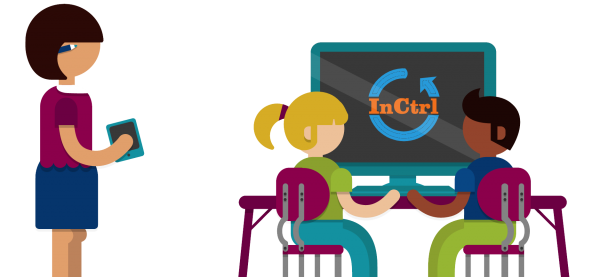While all InCtrl lessons already meet Common Core standards in English/Language Arts, here are additional activity ideas and subject-area connections to help you integrate the topic of digital citizenship into English/Language Arts.
Use digital media and tools to promote literacy, writing, research, and communication skills.
- Have students create a presentation to demonstrate knowledge, to present a book report, or critical review.
- Think of how students can use PowerPoint, iMovie, or create a poster, PSA or podcast as a summative assessment.
- Think of more ways that your class can use digital meeting or communication technologies such as GoToMeeting, Skype, or Google Hangouts. For example, hold book club discussions, study sessions, virtual assemblies, or class presentations with students from other schools, communities, states, or countries.
- Have students present their knowledge, opinions, projects or debates to younger students, fellow students, adults or public officials.
- Collaborate with teachers of other subjects to encourage students to exercise their communication and writing skills using responsible and ethical research methods and multimedia tools.
- Blogging: Try KidBlog a free and easy blog site for your class to use. It does not require your students to have an email address.
- Recommended Children’s Literature: There are several books that cover digital citizenship topics from a child’s perspective and connect to the InCtrl lessons. Download the list.
“Information literacy is very important in the subject of math, because they need to be able to research information online and understand sources. Validating information plays a major role in problem solving. Where did the information come from? How did I arrive at this point in the research? Can the information be validated? After collecting information students must organize and manage the information, which plays a big part in mathematical word problems.”
Teacher, New York
Lesson Idea Starters
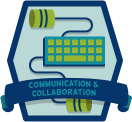
Use this lesson at the start of the school year to emphasize the importance of collaboration and problem solving, skills students will be using throughout the year in not only Math, but other subjects as well.
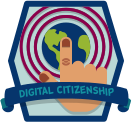
Explore with students what digital tools and devices they can use for various math projects. Give students time to practice and test various digital tools. Ask: What tools can they use? What tools have they used? What works well, what doesn’t? Why?
Discuss how math is used in many of today’s careers. This can help students start to understand how math crosses subject areas, what career options exist, and what types of cross-curricular skills are needed in those jobs. For example: What kind of math skills does a game developer need? What math skills do a computer programmer or scientist use? How do these careers operate and interact within a digital world?
Study binary code, explaining that it is the base for all computer language, and how it is used in computer science. Have students explore other types of codes and what they are used for. They can even develop their own code.
- Research and discuss what user data is collected to make algorithms work.
- Google’s search process as described on their site: http://www.google.com/intl/en/insidesearch/howsearchworks/thestory/
- Google’s algorithm broken down via How Stuff Works: http://computer.howstuffworks.com/google-algorithm.htm
- Have students work together to create a simple algorithm based on a problem they face every day, or games such as “rock-paper-scissors” or “tic-tac-toe” using a flow chart.
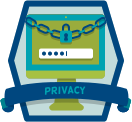
Calculate the reach of various social media posts. Use the handout from the lesson to calculate it based on the number of followers or friends one has.
Study digital media or stories that have gone viral. Discuss what makes it “viral” and the numbers.
Calculate the average number of followers and friends students have and compare to the rest of the school. Sort by age, location, etc.
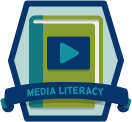
- Discuss the intentions of the chart, map, illustration, or photo. Ask: What information is published, and what is left unpublished? Who makes this decision? Who created it? How do we know the representation of information is accurate? Was it edited? What are they really trying to say?
- Discuss how graphs can be misleading. The same information can be interpreted in various ways if displayed in different types of chart (i.e. bar graph vs. pie chart). Other elements of a chart that can change its interpretation: Title, scale, labels, source of data, key to pictograph, and size of symbols. See examples here and here . How can subtle changes of graph elements change the interpretation of information? Provide students with a set of data to graph. Have them determine what scale, labels, and elements to include. Compare their results and how differently individual representations of data varied, and why.
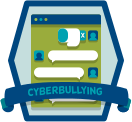
- To start, evaluate the following New Jersey school study from 2008 that evaluated students’ attitudes about cyberbullying: www.youthhealthsafety.org/BullyNJweb.pdf
- Next, have students compare findings to another study: http://cyberbullying.us/cyberbullying-research-2013-update/
- Ask: What types of statistics do the various studies communicate? Is the data that is represented graphically accurate? Are there “trends”? Is the study fair in capturing an accurate sample of information or data? Do the results of this study match up to your own personal experience? Do you agree with the research and their conclusions?
- Compare the representative samples of research studies. Discuss how scientific studies differ from “opt-in”, online surveys, and surveys that pay participants. How do these differences impact the validity of the survey?
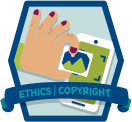
Students can research famous mathematicians in history and what made them famous. After they have researched, they can create an effective historical timeline or digital presentation to share what they have learned about math concepts, while giving credit to the original creators.
Have students think about how citations can benefit them. For example, citations can establish credibility and authority.
Do a lesson on how to complete a bibliography.

Discuss how “facts” and accuracy of data can change with knowledge, experience, perspective, and technology over time. For example, some research claims that smoking/coffee/chocolate can be good for people, while others show that they are not; or how previously people thought the world was flat instead of round. Therefore, it is important to discuss the intention of the study or people/group conducting the research. For instance:
- Variations and the evolution of measurement scales, systems, and accuracies.
- Geographical representation, mapping, weather-related information and accuracy have evolved with the invention of satellites, space advances, and become available for everyone with tools like Google Earth.
- Have students look at data, and information sources and ask: Where did this information come from? How did I arrive at this point in the research? Can the information be validated?
- Ask: How can this data be recalculated to be more accurate? Have students practice collecting, organizing, and managing information and data. They can use spreadsheets to analyze data, make graphs, calculate percentages, averages, ratios, etc. Students can then compare their numbers to other reports.

